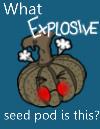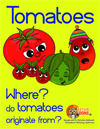
Help yourself to free 4-page previews of our comics and children’s books These books are also enjoyable for parents and grandparents
A major asset of these books is that the author has lived and worked in Guatemala, Mexico, Belize, and Honduras since age 16. Plus he has lived six weeks in Beijing, six months in Osaka, three years in Switzerland, and many years in Austria and Germany. Yet all the time he was in Guatemala much of these same years. For example, last month Dr Nicholas lectured in South Africa and during this same month traveled 46,000 miles studying digital imaging technology in USA, Germany, Italy, and Turkey, before returning to his research center in Guatemala.
Since age 16 he first was at a Maya ruins (of Palenque, Chiapas, Mexico). His high school thesis on this adventure got him into Harvard in the 1960’s (since in those years Harvard looked for people doing atypical things during their summer free time).
By age 19 he had discovered the intact tomb of the King of Tikal, deep under a jungle-covered pyramid.
His photographs decorate the Maya archaeology museum of Copan Ruinas, Honduras, and his exhibits of photos have been in the museum of Tikal, Guatemala. Plus the third largest botanical research garden in the world has exhibited his photographs of rare flowers of remote parts of Guatemala several times. Nicholas’s photographs also are included in a book published by National Geographic, already in the 1970’s.
Now Dr Nicholas (Hellmuth) is focused on putting his life’s experiences and knowledge about the plants and animals of the remote jungles into a series of educational books for schools. Yet because these books are so informative, they are also useful for college students! Indeed parents who read these books say they learned things they had not previously known about.
So here are several series of our books which can help you learn where much of what you eat every day actually comes from (what country, and what did these plants look like before modern scientists manipulated their genes to prepare varieties which can survive packing, transportation, etc.).
2000 years ago people got their food in gardens and groves of trees around their homes, plus in the nearby jungles!
I am not sure there are many other books with such a beloved style of illustrations that cover the plants and animals of the Maya (and Aztec) civilizations. Most popular articles and books and web sites are written by people from the world of books. Dr Nicholas is from fields and forests of Guatemala. Although he came from the ivy league world of Harvard, he recognizes that it is helpful to write for wider audiences than just peer-reviewed journals. Although he has lectured at Princeton, UCLA, University of Berkeley and universities around the world, his style is so reader-friendly and so informative, you would not realize he had three post-graduate research positions at Yale University (and was a visiting research professor for several years at two universities simultaneously: flying back and forth between them). Before he even got his PhD he received a visiting research professor position from the Japanese Ministry of Culture to provide help on digital imaging to the leading ethnology museum in Japan. He later had a similar position in Malta. So he has experience providing knowledge to people of diverse cultures and backgrounds.
The best way to experience these publications is to download the free 4-page previews. As soon as we decide with whom we would partner to publish the full versions, then the actual books will be available. But we wanted to make fully-illustrated previews to reveal in advance what you can expect.
Here are previews of ten different plants.
Here are previews of introductions to nine different kinds of animals of the Mayan swamps, rain forests, and caves.
Here are previews of introductions to nine different kinds of animals of the Mayan swamps, rain forests, and caves.
We also produce satire on modern behavior around the world, but with the setting in the rain forest eco-systems of the Mayan world of Guatemala.
In the future we will have more adventure stories: here are samples of two chapters. But first we prefer to cover all the utilitarian plants and endangered species of Neotropical birds, mammals, reptiles, and amphibians, one species at a time. In the adventure stories to come, all the plants and animals will be together in a natural eco-system.
Potential for Hollywood Blockbusters: both movies and animated films
Dr Nicholas has led a life that would make Raiders of the Last Arc jealous. And our humorous animal characters can easily reach the popularity of RIO and RIO 2: in fact a great movie would be a collaboration between their production team and the FLAAR+MayanToons storyboards team: the jungles of Brazil and Guatemala unite to reveal to the world an eco-system that beats that of Avitar. The floating islands in the science fiction movie Avitar are Karst geology hills which are found throughout Alta Verapaz and adjacent Peten and Izabal. Every time we drive to the jungles and mountains to study the eco-systems we actually drive through the landscape surrounding Pandora.
Most importantly of all, Dr Nicholas and his team have been doing business in China, with Chinese companies, for over six years. Four from FLAAR lived and worked in Beijing for a Chinese company just a few years ago. So we are familiar with Chinese business culture and would enjoy cooperating with companies such as Wanda Film Holdings Company, to develop exciting new movies (if Disney or Pixar or Sony or comparable don’t sign us up first).
First posted October 2016.


















